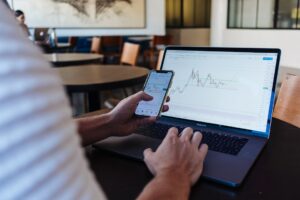Maximizing Profits with Real-Time Forex Data and Analysis
In the fast-paced world of forex trading, it is crucial to have access to real-time data and analysis to make informed trading decisions. The forex market operates 24 hours a day, five days a week, making it a highly dynamic and volatile market. As a trader, having access to up-to-date information can be the difference between making a profitable trade and incurring losses. In this article, we will explore the importance of real-time forex data and analysis and how it can help maximize profits.
Real-time forex data refers to the live streaming of currency prices, exchange rates, and other relevant market information. This data is essential for traders as it allows them to monitor market movements and identify trading opportunities. Without real-time data, traders would be limited to historical data, which may not accurately reflect the current market conditions.
One of the key benefits of real-time forex data is the ability to track currency pairs in real-time. Currency pairs represent the exchange rate between two currencies and are the primary instruments traded in the forex market. By having access to real-time data, traders can monitor the fluctuations in currency pairs and identify trends or patterns that can be used to make profitable trades.
Real-time forex data also provides traders with valuable information about market sentiment. Market sentiment refers to the overall attitude of traders towards a particular currency pair. Positive market sentiment indicates that traders are optimistic about the currency pair’s prospects, while negative market sentiment suggests a more bearish outlook. By monitoring real-time data, traders can gauge market sentiment and adjust their trading strategies accordingly.
In addition to real-time data, traders can also benefit from real-time forex analysis. Forex analysis involves the examination of market data, charts, and indicators to identify potential trading opportunities. There are two main types of forex analysis: fundamental analysis and technical analysis.
Fundamental analysis involves evaluating economic, social, and political factors that may impact currency prices. This analysis includes monitoring economic indicators such as GDP growth, inflation rates, and interest rates. By analyzing these factors, traders can predict how they may affect currency values and make informed trading decisions.
Technical analysis, on the other hand, focuses on historical price data and chart patterns to predict future price movements. Traders use various technical indicators such as moving averages, trend lines, and oscillators to identify trends and potential entry or exit points. Real-time forex analysis allows traders to apply these technical indicators to current market conditions and make accurate predictions based on the latest data.
By combining real-time forex data with analysis, traders can maximize their profits by making timely and informed trading decisions. Here are some strategies that traders can employ to take advantage of real-time data and analysis:
1. Trend Trading: By analyzing real-time data and identifying trends, traders can enter trades in the direction of the prevailing trend. This strategy allows them to ride the momentum and maximize profits.
2. Breakout Trading: Breakout trading involves identifying key support and resistance levels and entering trades when the price breaks out of these levels. Real-time data and analysis can help traders identify potential breakout opportunities and execute trades accordingly.
3. News Trading: Real-time forex data allows traders to react quickly to market-moving news and events. By monitoring economic calendars and news feeds, traders can take advantage of significant price movements triggered by news releases.
4. Scalping: Scalping is a short-term trading strategy that aims to capture small profits from multiple trades. Real-time data and analysis are essential for scalpers as they need to make quick trading decisions based on current market conditions.
In conclusion, maximizing profits in forex trading requires access to real-time data and analysis. Real-time data allows traders to monitor market movements, track currency pairs, and gauge market sentiment. Real-time analysis, on the other hand, helps traders identify trading opportunities and make accurate predictions based on the latest data. By combining real-time data with analysis, traders can implement various trading strategies and increase their chances of making profitable trades.





